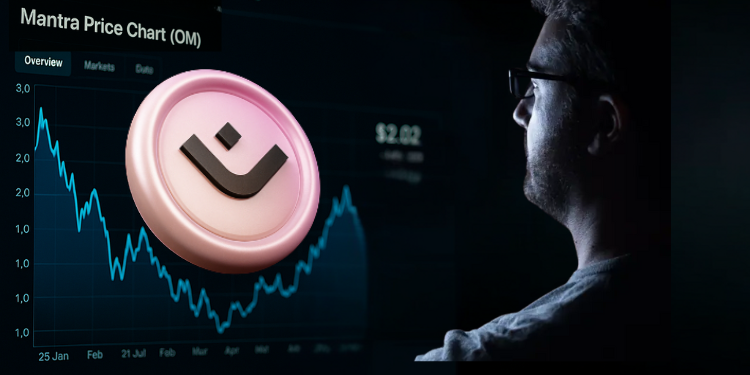Absolutely! Here’s a quick 3-bullet summary of the rewritten article:
- Mantra’s OM token crashed over 90% in 24 hours, wiping out $5B in market cap amid rumors of insider dumping, forced liquidations, and exchange manipulation.
- Co-founder John Mullin blamed centralized exchanges, claiming sudden forced closures during low-liquidity hours triggered the collapse without proper warning.
- At least 17 wallets moved $227M in OM to exchanges before the crash, including two allegedly linked to investor Laser Digital—fueling more speculation and confusion.
In one of the most chaotic 24-hour stretches we’ve seen in a while, Mantra’s OM token nosedived by over 90%, leaving traders, investors—and frankly, the whole crypto space—scrambling for answers. On April 13, OM dropped from just over $6 to under $0.50, erasing more than $5 billion in market value. And nobody seems to agree on exactly why.
Whispers of a rug pull started flying. Some blamed forced liquidations. Others pointed to mislabeled wallets, or maybe even intentional exchange manipulation. Whatever it was, it shook the market—and fast.
A Big Rise, Then the Fall
Mantra wasn’t some no-name token before this happened. It was actually on a hot streak. Backed by a $1B deal to tokenize Damac Group’s real estate in Dubai, a VARA license, and a $108M ecosystem fund involving major players like Amber Group, Laser Digital, and Brevan Howard Digital, things were looking solid.
In February 2025, OM hit an all-time high near $9. But by the evening of April 13, that run hit a brick wall. Here’s how the carnage unfolded, hour by hour.
Timeline: Mantra’s Wild 24 Hours
April 13 – 16:00 to 18:00 UTC
All quiet. OM hovered between $6.14 and $5.52. Just a regular, calm Sunday.
18:00 to 20:00 UTC
Boom. OM tumbles to $1.38, then craters to $0.52. The panic sets in. X (formerly Twitter) lights up with theories: rug pull? insider dump? force-liquidation spiral?
20:00 to 22:00 UTC
Screenshots of a deleted Telegram channel go viral—fueling rug pull speculation. But turns out it wasn’t even Mantra’s official group. That was still online, though barely holding the crowd together.
22:00 to 00:00 UTC
Finally, Mantra posts a statement. But it’s vague, and people aren’t buying it. Backlash is immediate. Then, co-founder John Patrick Mullin follows up with a more detailed post on X.
He blamed the crash on “reckless forced closures” from centralized exchanges, claiming accounts were liquidated without warning during low-liquidity hours—specifically, late Sunday UTC when most of Asia was still asleep.
“Negligence at best,” Mullin wrote. “Intentional market positioning at worst.”
Wallet Moves Stir the Pot
Data from Lookonchain revealed that at least 17 wallets had moved a combined 43.6M OM (worth $227M at the time) into Binance and OKX in the days before the crash. Two of those wallets? Labeled by Arkham Intelligence as belonging to Laser Digital, a known Mantra investor.
That sent the rumor mill into overdrive. Some cried foul play. Others demanded proof. As of now, Arkham hasn’t confirmed whether the wallet tags are accurate, and no response has been issued to clarify.
So was it a coordinated dump? A cascade of auto-liquidations? A labeling error gone viral? Nobody knows for sure. But one thing’s clear: in crypto, all it takes is a few wrong moves—at the wrong time—for everything to collapse.














